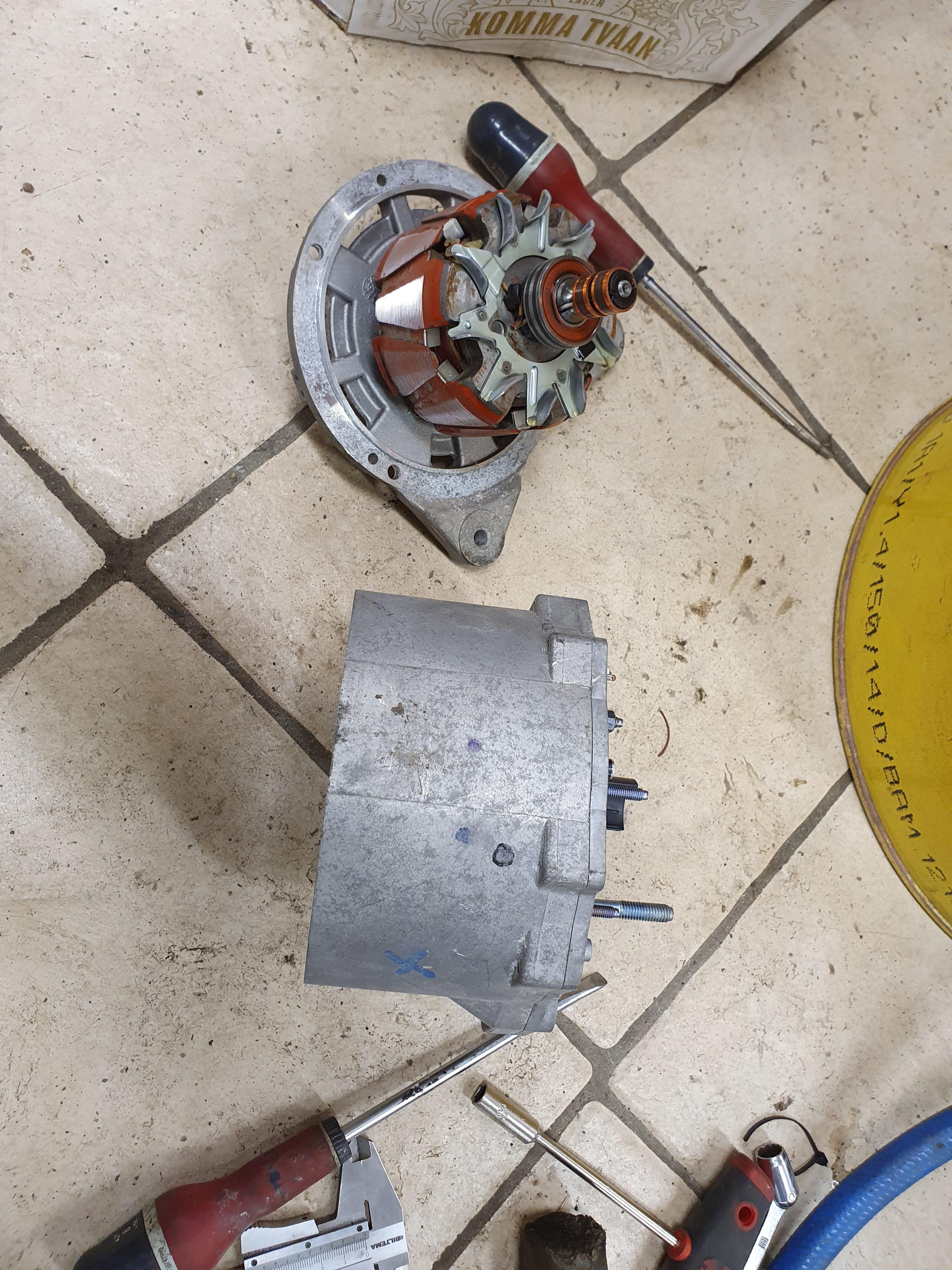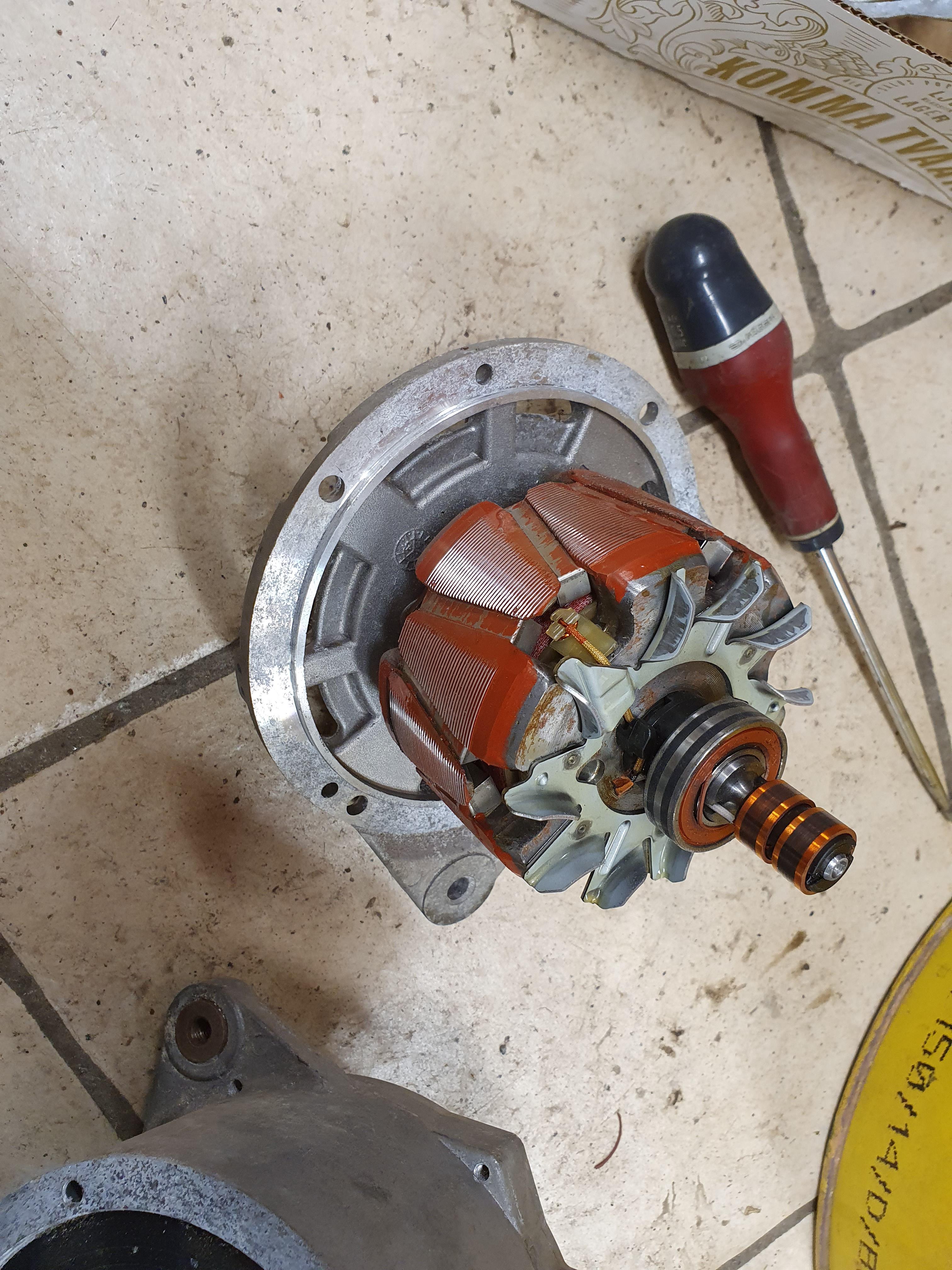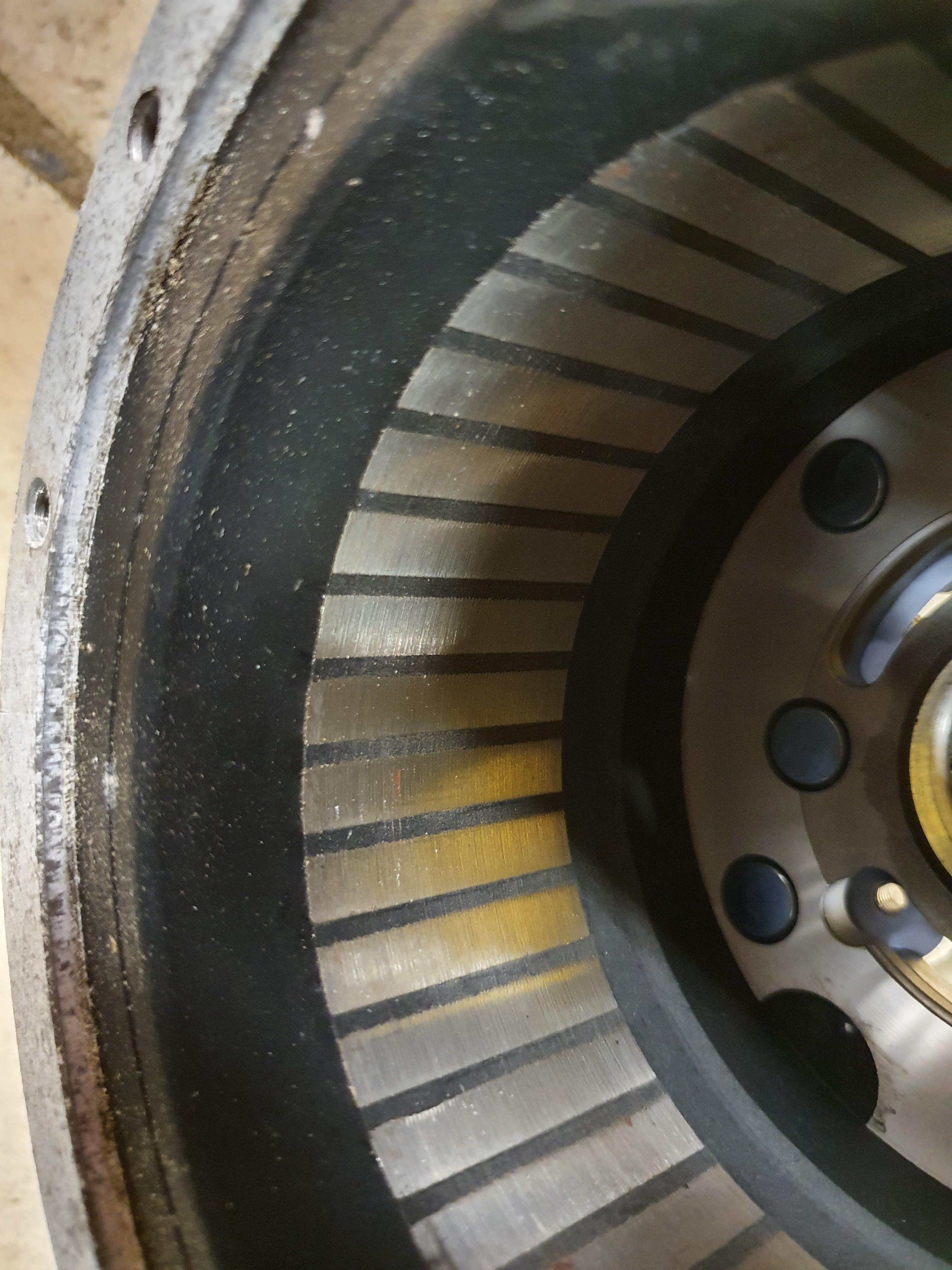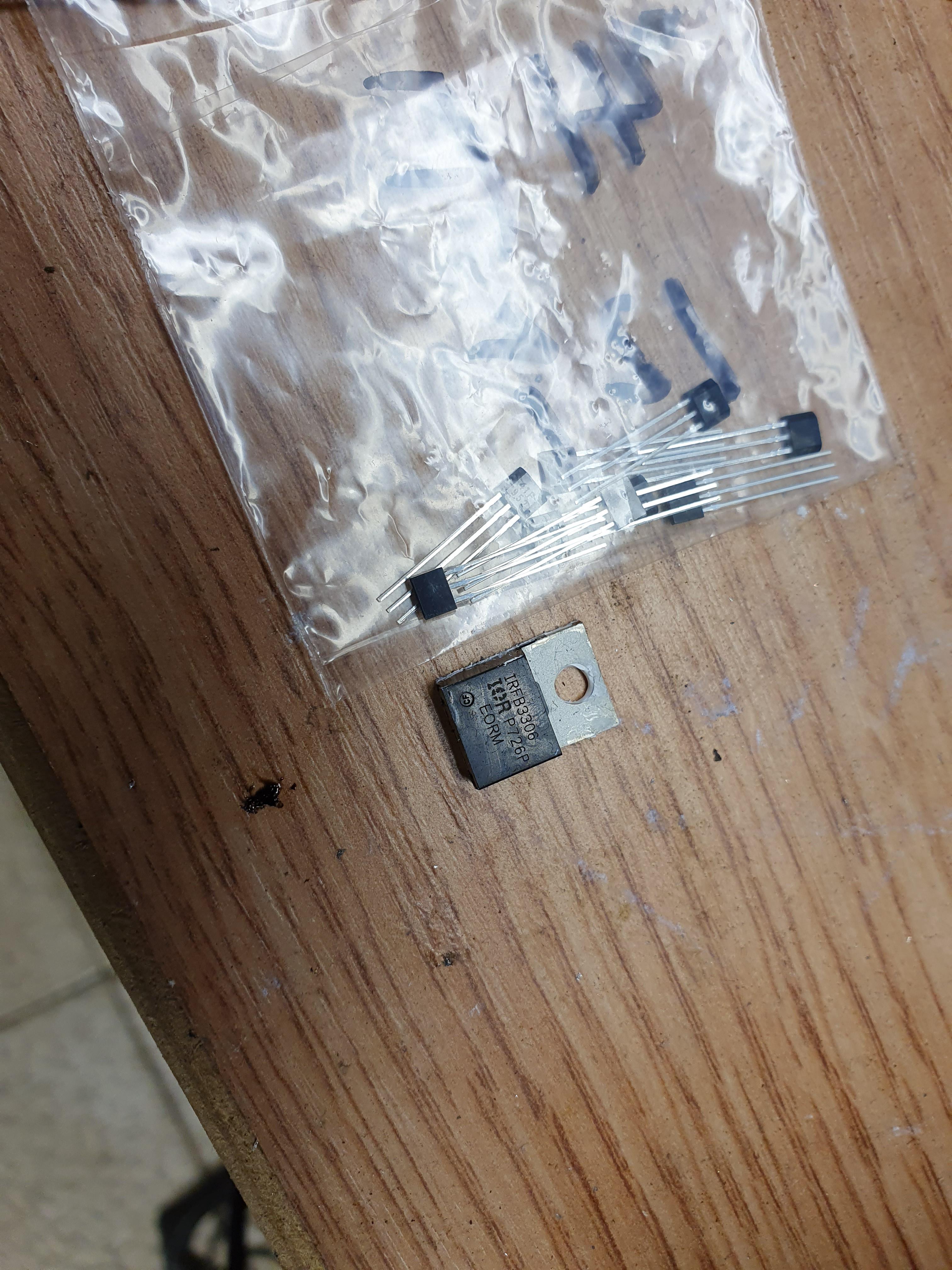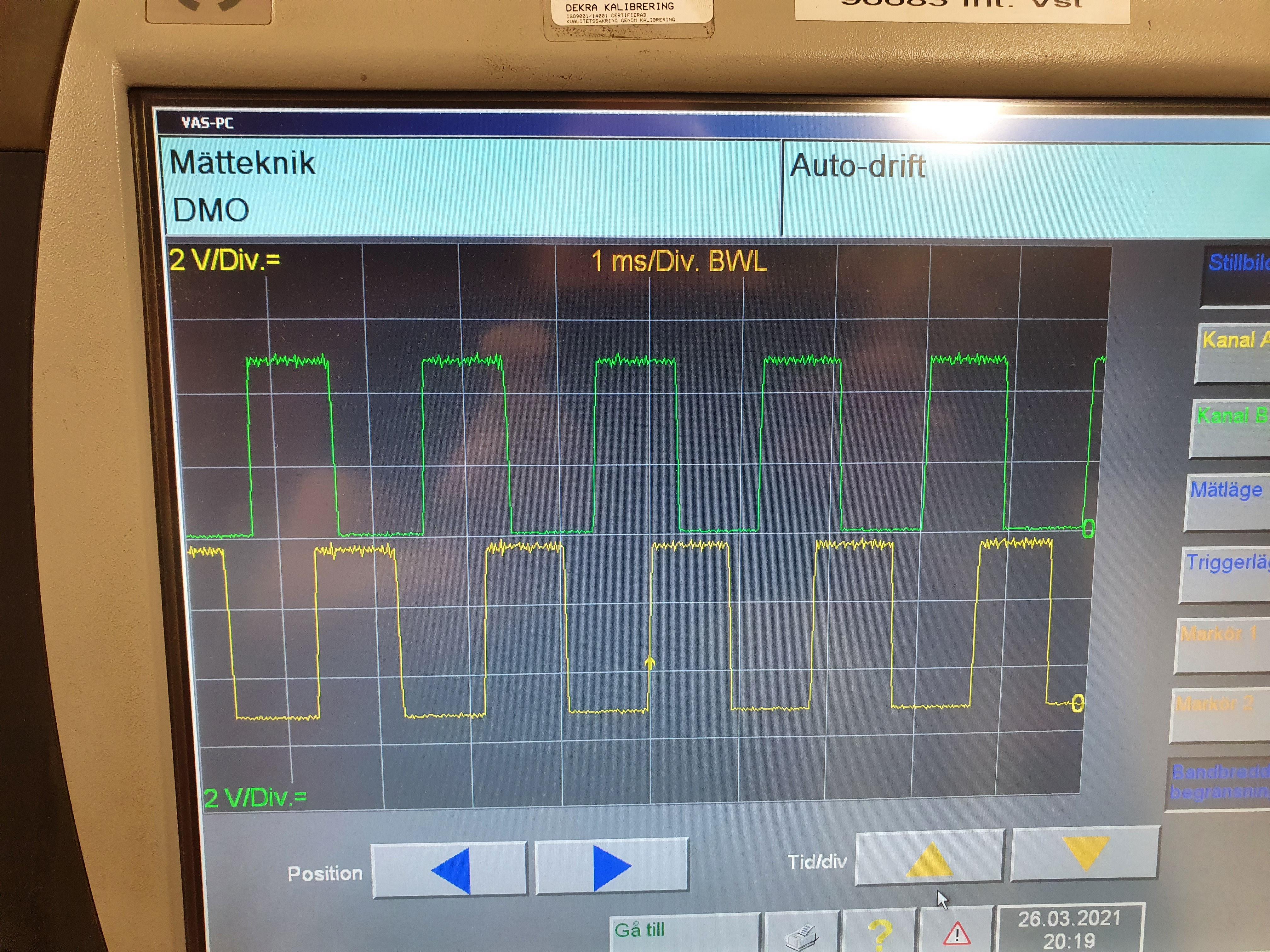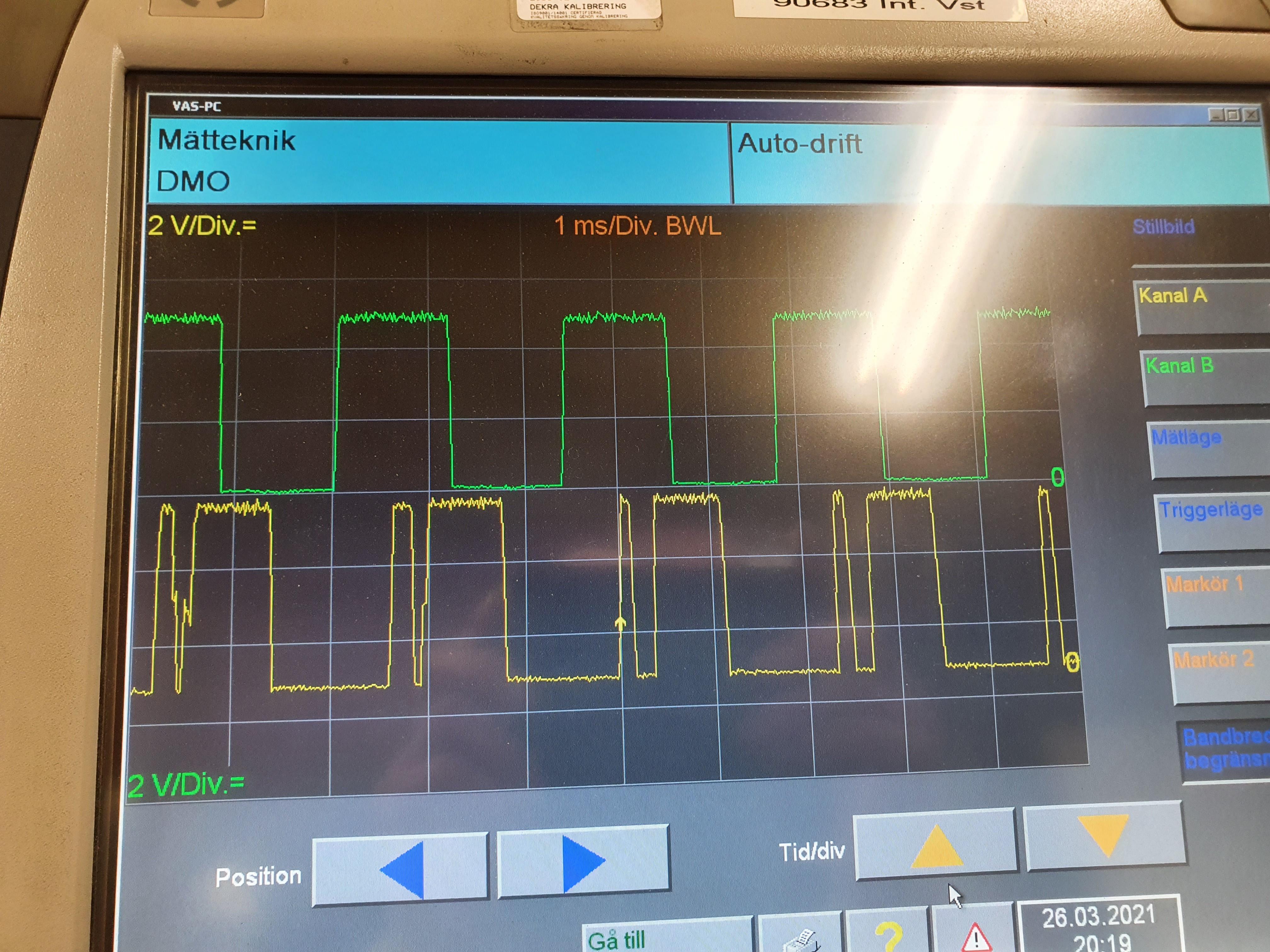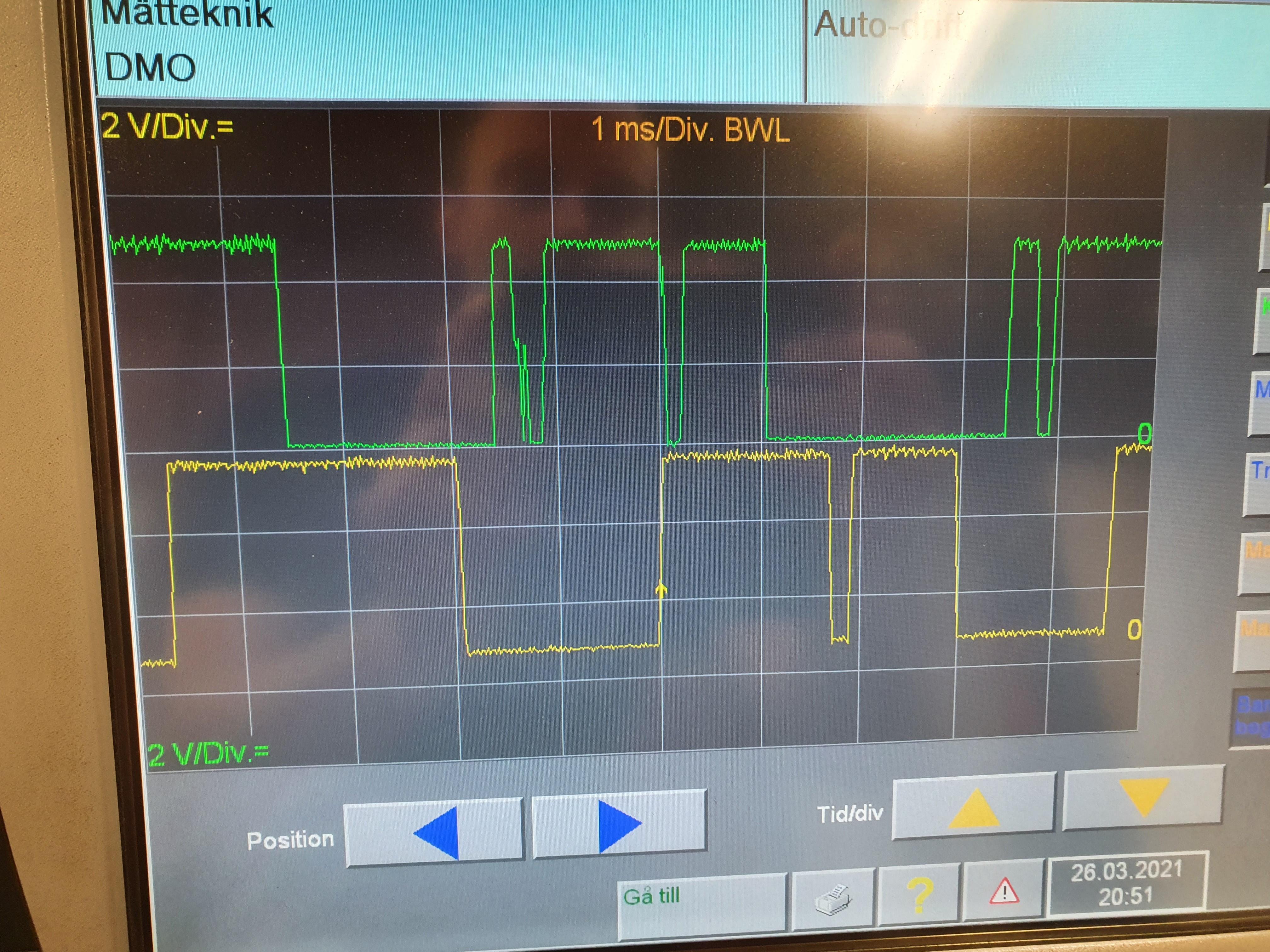j bjork
100 kW
A little side project..
Mostly just for fun I want to convert a (or a few) alternators.
I first made an easy conversion that I played with a little on a Bosch 140A:
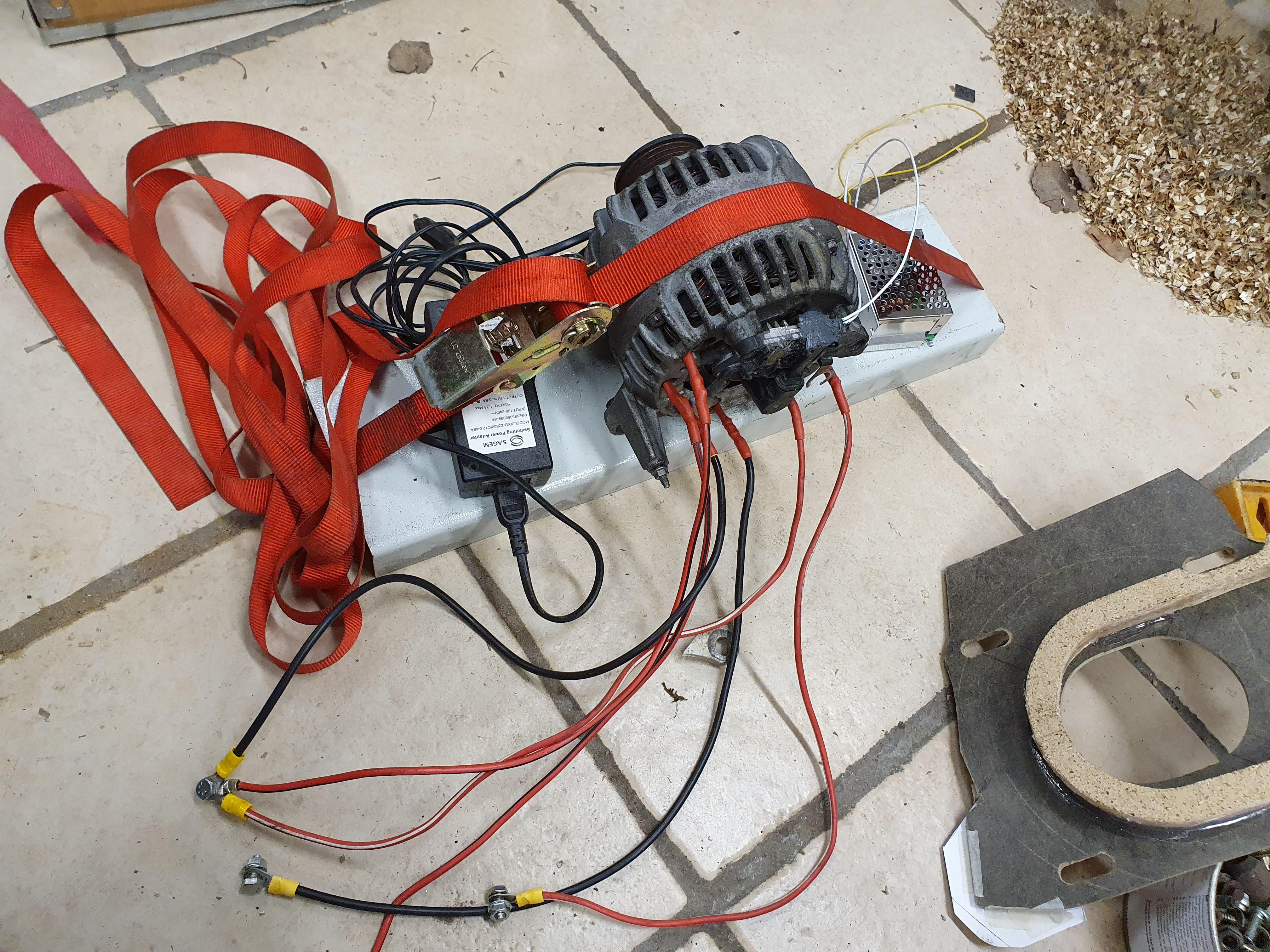
I tested a little in delta and Wye, but it is annoying to need power to the field winding and to run sensorless..
I took apart a valeo 120A alternator with a broken field winding, and tried to take the rotor apart. I eventually got it apart, but damaged.
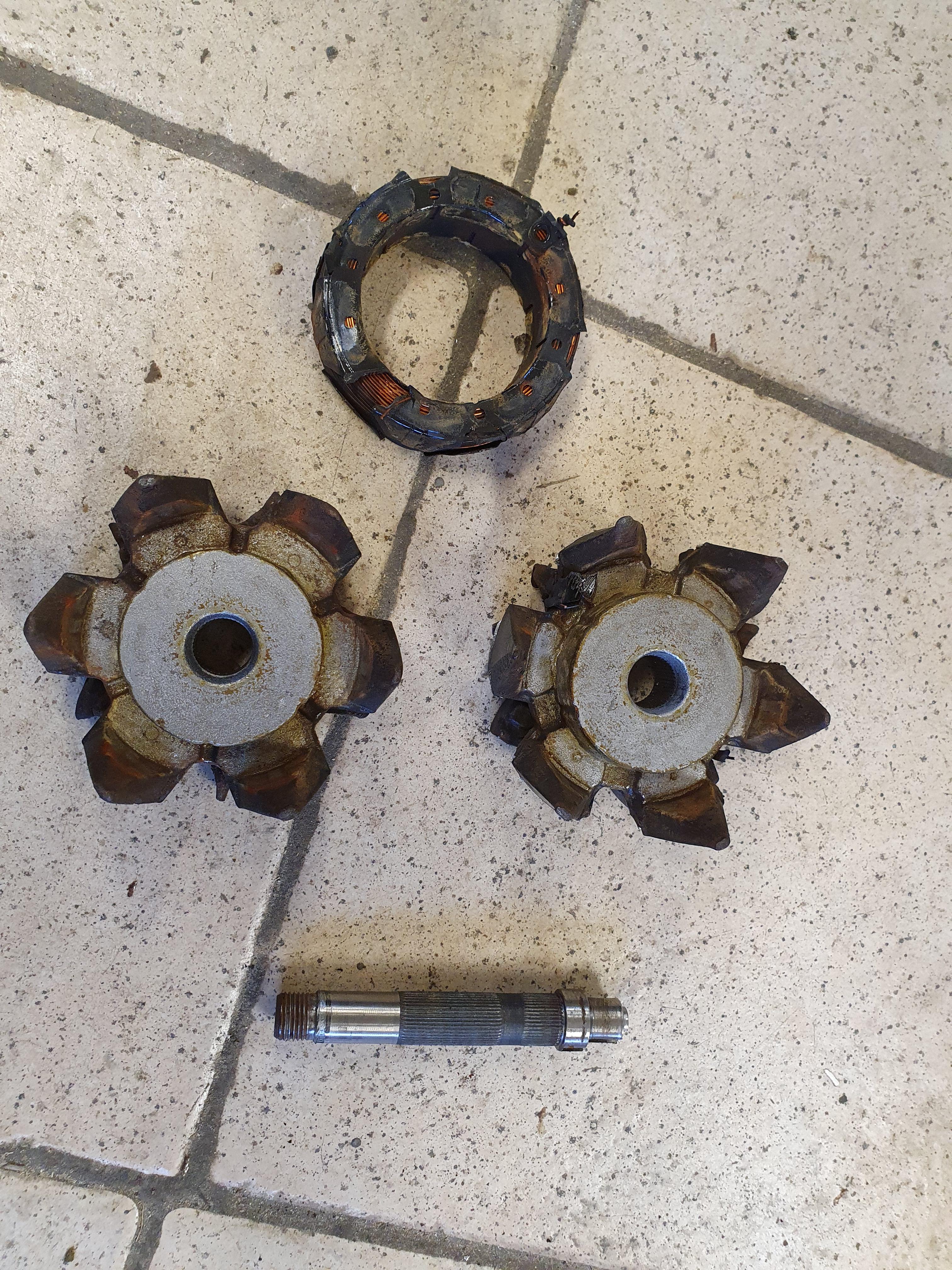
I have one more, and now I can take it apart without damage.
The plan is to replace the winding with a magnet. To fit it should be 83mm dia, 60mm hole and 30mm thick.
I found a ferrite magnet that is 80x40x15, pulling force 9,5kg. I could stack 2 of them to get 30mm and take off some material on the rotor claws to fit the center hole on the magnets.
Would that work, or do I need stronger magnets?
I would like to use Bosch alternators, they seem to be better.
Valeo laminations:

Bosch laminations:
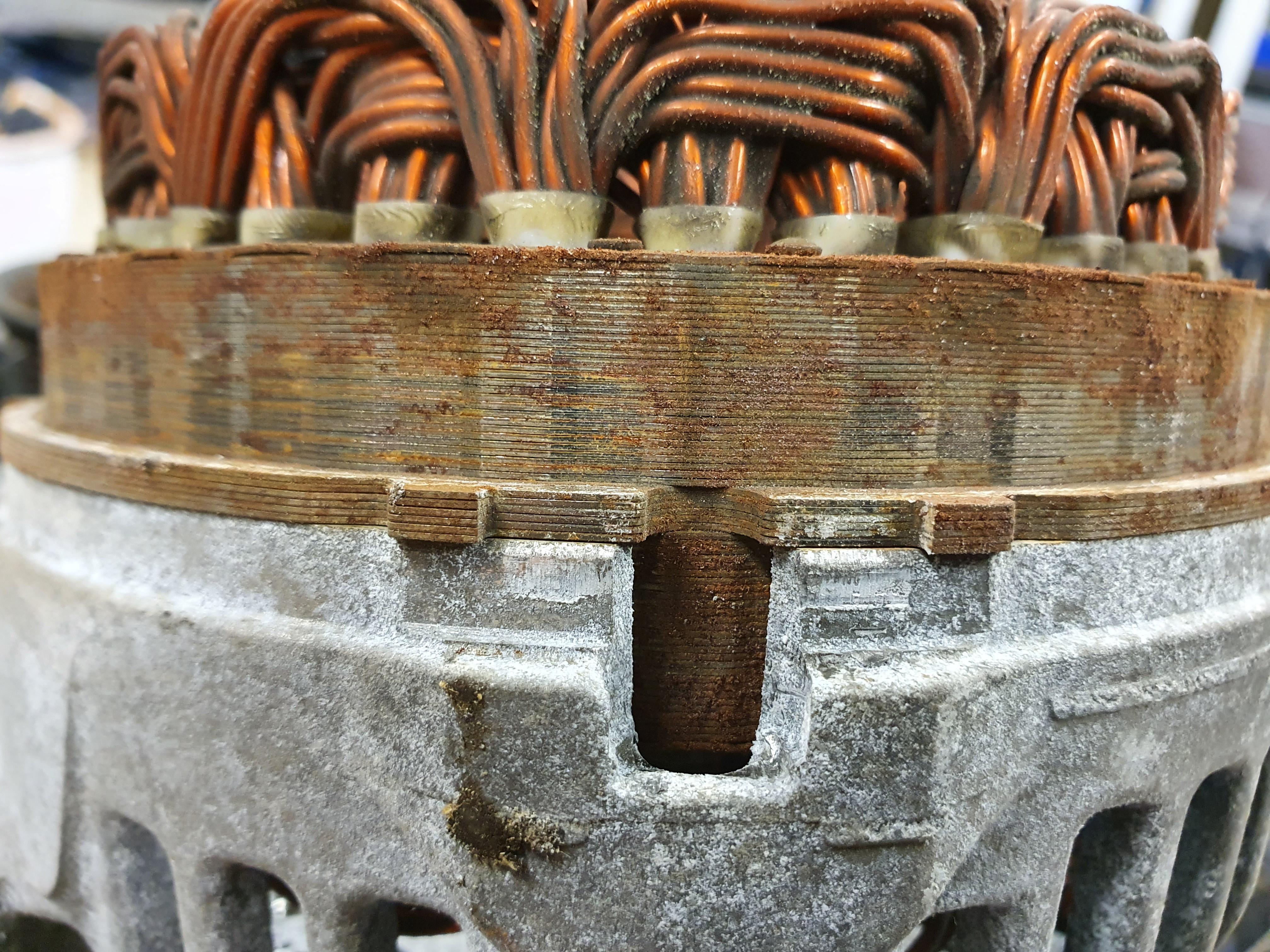
But so far I have not been able to take the bosch rotor apart:

I have tried to press out the shaft in either direction, but so far no movement.
I havent tried to pull one half at a time. I tried that with a puller on the valeo, but the only thing that led to was damaging the rotor.
On the valeo rotor I eventually could press out the shaft from the rotor by pressing on the pulley side on the shaft. But that dont seem to work on the Bosch.
If someone knows how, I am interested. Otherwise I guess I take another bosch rotor and beat on till something gives, so I can find how it should be done.
Mostly just for fun I want to convert a (or a few) alternators.
I first made an easy conversion that I played with a little on a Bosch 140A:

I tested a little in delta and Wye, but it is annoying to need power to the field winding and to run sensorless..
I took apart a valeo 120A alternator with a broken field winding, and tried to take the rotor apart. I eventually got it apart, but damaged.

I have one more, and now I can take it apart without damage.
The plan is to replace the winding with a magnet. To fit it should be 83mm dia, 60mm hole and 30mm thick.
I found a ferrite magnet that is 80x40x15, pulling force 9,5kg. I could stack 2 of them to get 30mm and take off some material on the rotor claws to fit the center hole on the magnets.
Would that work, or do I need stronger magnets?
I would like to use Bosch alternators, they seem to be better.
Valeo laminations:

Bosch laminations:

But so far I have not been able to take the bosch rotor apart:

I have tried to press out the shaft in either direction, but so far no movement.
I havent tried to pull one half at a time. I tried that with a puller on the valeo, but the only thing that led to was damaging the rotor.
On the valeo rotor I eventually could press out the shaft from the rotor by pressing on the pulley side on the shaft. But that dont seem to work on the Bosch.
If someone knows how, I am interested. Otherwise I guess I take another bosch rotor and beat on till something gives, so I can find how it should be done.


